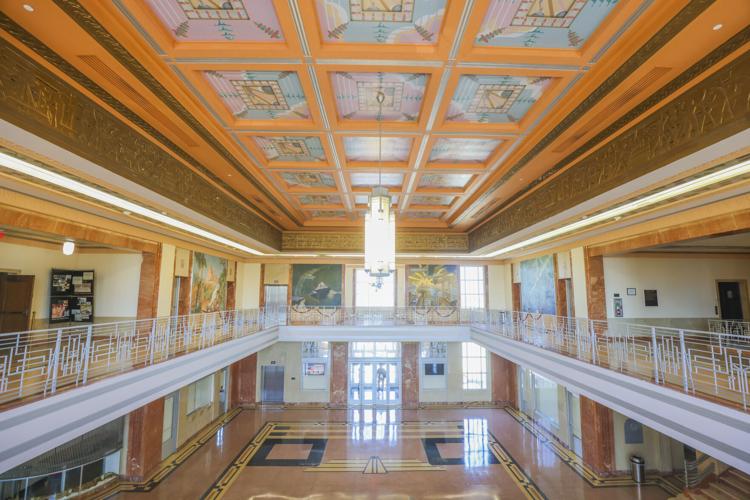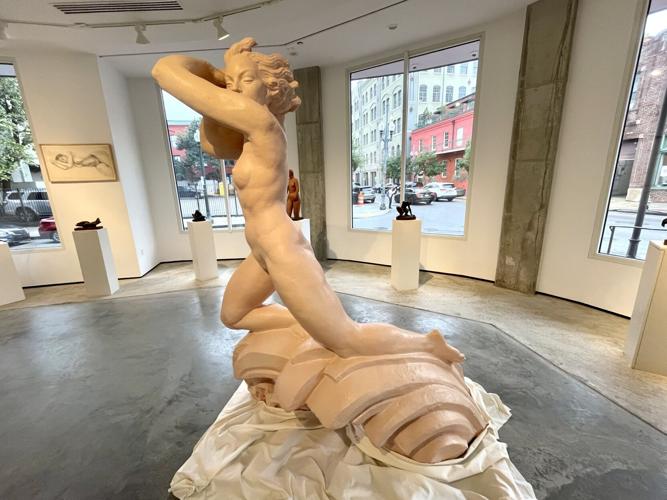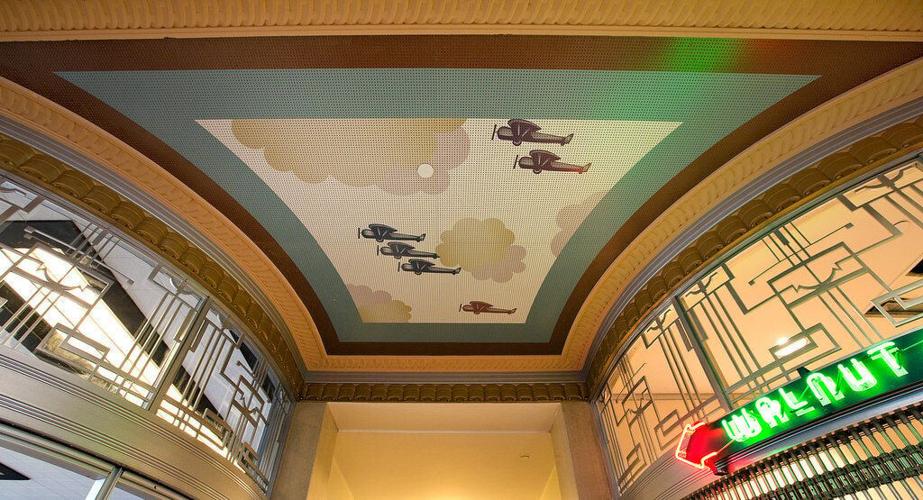Ron Hill, a fan of New Orleans’ history and architecture, needed just one visit to Lakefront Airport to ignite his enthusiasm about its a
In a Curious Louisiana query, Hill wrote: "Lakefront Airport is an artistic and architectural gem but is terribly underutilized. Are their plans to restore the controversial fountain of the four winds? Is there still a restaurant in the magnificent terminal? The terminal itself is museum-worthy for both its architecture as well as its art. Are there any plans to better utilize this magnificent public space?"
Art deco, whose heyday was in the 1920s and 1930s, is a sleek, streamlined style visible throughout the terminal, which was built on 300 acres reclaimed from Lake Pontchartrain and opened in 1934.
“You don’t see a lot of art deco highlighted in New Orleans,” Hill, 57, said. “I’m a fan now. The terminal is spectacular, inside and outside. People need to check it out.”
Among those who have been dazzled by the terminal was Amelia Earhart, who spent a night there in 1937, a month before she vanished while trying to fly around the world.
“I’ve flown over your airport here numerous times, and it looked so nice from the air that I decided to land and see how it looked from the ground,” Earhart said, according to the airport’s website.
When she bunked there, the facility was called Shushan Airport, named for Orleans Levee Board President Abraham Shushan, an ally of Huey P. Long, who had commissioned the project. But after he was implicated in involving Long’s followers in the late 1930s, every vestige of his name was removed from the building, including each doorknob bearing an “S.” (He was indicted on mail-fraud charges but never went to prison, and President Harry S. Truman pardoned him.)
Lakefront Airport evokes romance of aviation

Photo provided by Friends of the New Orleans Lakefront Airport - Xavier Gonzalez's mural, 'Mayan Ruins,' 1934. Oil on cotton duck, at the New Orleans Lakefront Airport.
The terminal, whose façade is replete with bas-reliefs, evokes the romance of aviation, inside and out. Eight murals depicting destinations around the world ring the terminal’s second-story balcony overlooking the lobby.
Embedded in the lobby floor is a compass pointing to 16 destinations around the world that indicate how far each city is from New Orleans. The point showing the way to Paris leads the eye to a mural featuring the Spirit of St. Louis, the airplane Charles Lindbergh flew to the City of Light on his historic trans-Atlantic flight in 1927.
Hill’s curiosity about the airport extended to the Fountain of the Four Winds, an on the airport grounds using three women and a man to represent winds from the four principal compass points. They surround a partially submerged globe.

The Fountain of the Four Winds at the Lakefront Airport was saved from outraged WPA officials by Eleanor Roosevelt.
The piece, a project of the Works Progress Administration of the New Deal, was controversial because the figures are nude. A WPA official threatened to break up the sculpture with a sledgehammer, prompting Alférez to guard it one night with a shotgun. The writer Lyle Saxon wrote to Eleanor Roosevelt about the controversy and asked her to intercede. The president’s wife wrote back, saying she saw nothing wrong with the sculpture, and it was saved.
The sculpture is surrounded by a fence. Its fountain hasn’t worked in decades, said Wilma Heaton, chair of the airport committee of the Lakefront Management Authority, the arm of the state that operates the airport.
The Federal Emergency Management Agency allocated $64 million to repair Hurricane Katrina-related damage to the airport, including $19 million for the terminal building, but that sum didn’t include money to repair the fountain, she said.

The ceiling murals and neon signs point to the Walnut Room. The renovation work was highlighted during a tour by architect Alton Ochsner Davis of the Lakefront Airport Thursday, August 29, 2013, restoring it to its former glory.
“The only way to go is private money,” said Heaton, who has created Friends of the Lakefront Airport to raise money for that initiative.
City's aviation outgrows Lakefront Airport
Despite the airport’s aesthetic appeal, it wasn’t big enough to handle the city’s growing aviation needs. A bigger airport was discussed by the end of the 1930s, but expansion of the facility on the lake’s south shore wasn’t possible, and the United States’ entry into World War II at the end of 1941 put that matter on pause.
A new airport — Moisant Field — was opened in May 1946 in Kenner. It was named for John B. Moisant, an aviation pioneer who was killed when he was thrown from an airplane in 1910. It became New Orleans International Airport in 1960 and, in 2001, Louis Armstrong New Orleans International Airport.
Meanwhile, Lakefront Airport and its art deco embellishments were encased beneath plaster, concrete and steel because the space was converted to a bomb shelter in 1964, when Cold War tensions were still high. Inside, a false floor was built over the lobby to provide extra space.

Architect Alton Ochsner Davis shows a small section of one of the murals on the balcony level of the Lakefront Airport Thursday, August 29, 2013. The murals, as well as most of the windows were covered over when the building was refitted as a bomb shelter during the cold war, but has now been restored to its former glory.
Restoring an art deco gem
The eight balcony murals were put under Japanese rice paper before going behind drywall. When the time came to restore the terminal to its pre-Cold War glory, Elise Grenier, a conservator, spent three years restoring the paintings.
It was painstaking work. To protect the art, each was encased in a box, with its own HVAC system.
At first, two were missing. One, of Rio de Janeiro, was found in a repository of the Louisiana State Museum. The other, of Bali, is missing. A copy hangs on the wall, but Grenier said she is determined to track down the absent mural.
Even though commercial air travel operates out of Kenner, Lakefront Airport is still busy. Private planes use it, and the space is a site for flying lessons. The airport can be rented for events, and Messina’s Runway Café serves breakfast and lunch every day except Monday.
Invariably, everyone who steps inside stops to admire this time capsule from the 1930s.
“The airport is a living museum.” Grenier said.









